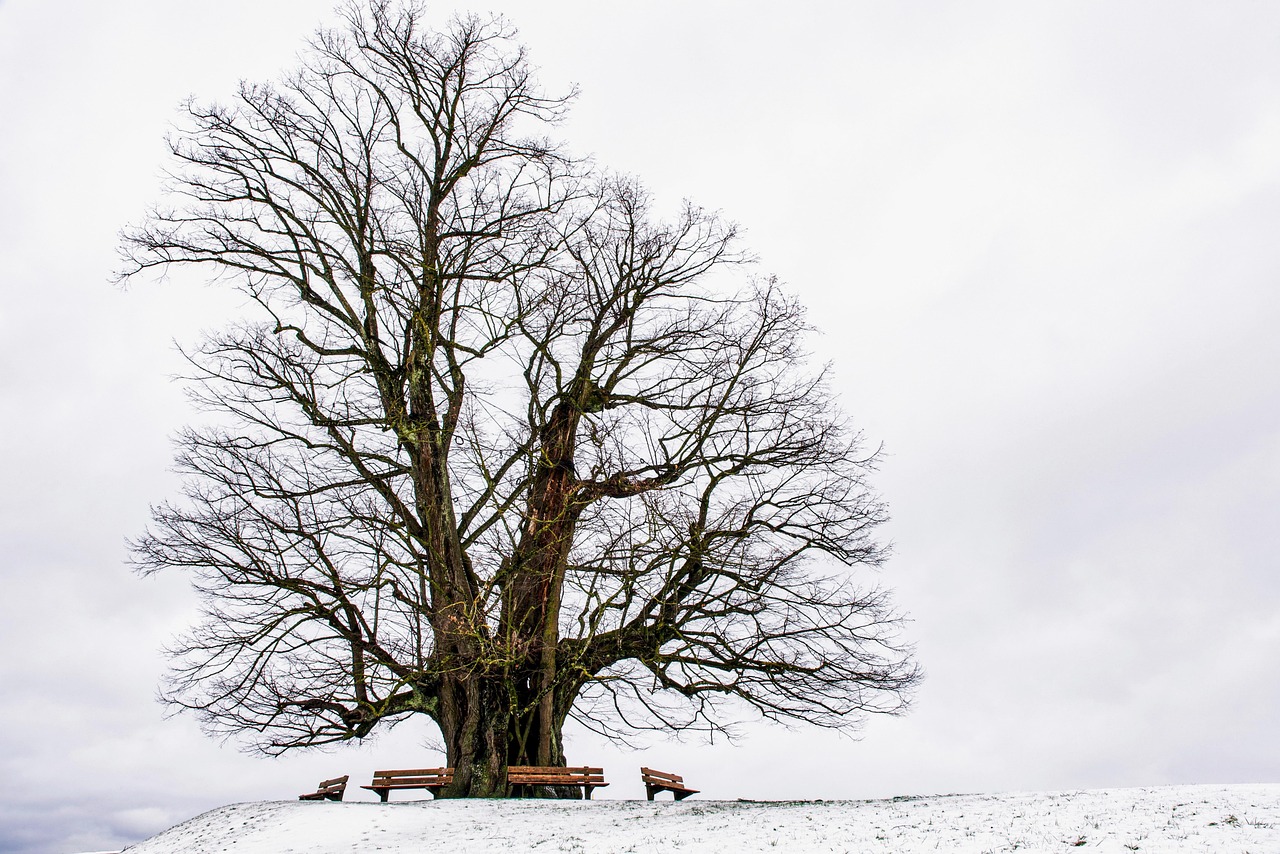The Verawood tree, known scientifically as Bulnesia sarmientoi, exhibits a moderate growth rate, typically reaching heights of 40 to 60 feet. In optimal conditions, it can grow about 1 to 2 feet per year, making it suitable for both timber production and landscaping purposes.
The Verawood tree is native to South America, particularly found in regions like Argentina and Paraguay. Its dense and durable wood makes it highly sought after for various applications, including furniture, flooring, and decorative items. In addition to its timber value, the Verawood tree is increasingly recognized for its role in landscaping due to its attractive appearance and shade-providing qualities.

This evergreen tree features a straight trunk and a broad canopy, providing not only aesthetic appeal but also functional benefits in urban and rural landscapes. The tree’s leaves are small, oval-shaped, and dark green, contributing to its lush appearance. Additionally, Verawood trees produce small yellow flowers that can attract various pollinators, enhancing biodiversity in landscaped areas.
Understanding Verawood Tree Growth
The growth rate of the Verawood tree can vary based on several factors. These include soil quality, climate conditions, and care practices. When planted in rich, well-drained soil and given proper care, these trees can thrive and reach their maximum potential.
Verawood trees prefer warm climates with adequate rainfall. They are tolerant of drought conditions but flourish with consistent moisture. Therefore, understanding your local climate is essential before planting. Below are some key factors influencing the growth rate of Verawood trees:

- Soil Quality: Well-draining soil rich in organic matter promotes healthy growth.
- Watering: Regular watering during dry spells encourages faster growth.
- Sunlight: Full sun exposure is ideal for optimal growth rates.
- Nutrients: Fertilizing the tree can enhance growth and health.
One important aspect of growing Verawood trees is their adaptability. They can grow in various soil types, from sandy to clay soils; however, they do best in loamy soils that retain moisture without becoming waterlogged.
Growth Rate Comparison
When considering trees for timber and landscaping, comparing the growth rates of different species can be beneficial. The following table summarizes the average growth rates of several popular tree species alongside Verawood:
| Tree Species | Average Height (Feet) | Growth Rate (Feet/Year) | Uses |
|---|---|---|---|
| Verawood | 40-60 | 1-2 | Timber, Landscaping |
| Oak | 50-100 | 1-2 | Timber, Shade |
| Pine | 30-80 | 1-3 | Timber, Landscaping |
| Maple | 40-60 | 1-3 | Timber, Aesthetic |
This comparison highlights that while Verawood has a moderate growth rate similar to some hardwoods like oak, it is slower than faster-growing conifers such as pine. The choice of species often depends on the specific needs of the landscape or timber project.

In addition to its growth characteristics, the Verawood tree’s wood is renowned for its density and durability. This makes it an excellent choice for those looking for sustainable timber options. Its resistance to decay and insects adds to its appeal for various applications.
The Verawood tree is also a valuable addition to ecological restoration projects. Its ability to thrive in diverse conditions allows it to play a crucial role in reforestation efforts. By planting Verawood trees, landowners can contribute positively to their local ecosystems while benefiting from the tree’s aesthetic and commercial value.
Factors Influencing Verawood Tree Growth
Several factors play a significant role in the growth of Verawood trees. Understanding these elements can help landowners and landscapers maximize the potential of this beautiful tree. Below are some critical factors that influence the growth rate of Verawood trees:
- Climate: Verawood trees thrive in warm, subtropical climates. They prefer temperatures between 70°F and 90°F. Extreme cold can hinder growth.
- Soil Type: These trees grow best in well-drained, loamy soils rich in organic material. Poor drainage can lead to root rot.
- Water Availability: While Verawood trees are drought-tolerant, consistent watering, especially during dry spells, enhances their growth rate.
- Sunlight: Full sun exposure is vital. Verawood trees require at least six hours of direct sunlight daily to thrive.
- Fertilization: Applying a balanced fertilizer during the growing season can provide essential nutrients that support healthy growth.
Optimal Planting Conditions
When planting Verawood trees, creating optimal conditions is crucial for their establishment and growth. Here are some guidelines to ensure successful planting:

- Selecting the Right Location: Choose an area with ample sunlight and good air circulation.
- Soil Preparation: Test the soil pH and amend it if necessary. The ideal pH range for Verawood is between 6.0 and 7.5.
- Planting Depth: Dig a hole that is twice as wide as the root ball but no deeper than the root ball itself to prevent water accumulation around the roots.
- Spacing: Space Verawood trees at least 30 feet apart to allow for their mature size and promote healthy growth.
- Watering After Planting: Water thoroughly after planting to settle the soil around the roots and eliminate air pockets.
Pest and Disease Management
Like any tree species, Verawood trees can be susceptible to pests and diseases. Managing these threats is essential for maintaining healthy growth and vitality. Here are some common issues and management strategies:
Pests
- Wood Borers: These pests can harm the trunk and branches. Regular inspection and removing infested areas can help control them.
- Aphids: These small insects can weaken trees by sucking sap. Introduce natural predators like ladybugs or use insecticidal soaps to manage infestations.
- Scale Insects: Scale insects can appear on leaves and stems. Horticultural oils or insecticidal soaps can effectively manage these pests.
Diseases
- Root Rot: This disease commonly occurs in poorly drained soils. Ensure proper drainage and avoid overwatering to prevent it.
- Leaf Spot: Fungal infections can cause leaf discoloration. Remove affected leaves and apply fungicides if necessary.
Caring for Young Verawood Trees
If you are growing Verawood trees from seedlings or saplings, proper care during their early years is critical for establishing a strong foundation. Here are some tips for caring for young Verawood trees:
- Mulching: Apply a layer of mulch around the base of the tree to conserve moisture, suppress weeds, and regulate soil temperature.
- Pruning: Prune young trees to remove any dead or damaged branches. This encourages healthy growth and shapes the tree.
- Regular Monitoring: Check regularly for signs of stress, pests, or diseases. Early detection helps in effective management.
- Avoiding Compaction: Keep foot traffic away from the root zone to prevent soil compaction, which can hinder root development.
Caring for Verawood trees properly during their early years ensures that they will grow strong and healthy, contributing to their beauty and functionality in landscaping or timber production later on.
The Role of Verawood Trees in Landscaping
Verawood trees serve multiple purposes in landscaping, making them a valuable addition to various projects. Their growth characteristics and aesthetic appeal allow them to fit seamlessly into different landscape designs. Here are several benefits of incorporating Verawood trees into landscaping:
- Aesthetic Appeal: The tree’s lush green foliage and attractive flowers enhance the visual impact of gardens and parks.
- Shade Provision: With their broad canopy, Verawood trees provide ample shade, making outdoor areas more comfortable.
- Ecosystem Support: These trees support local wildlife by providing habitat and food sources for birds and insects.
- Sustainable Timber Source: As a source of durable wood, Verawood contributes to sustainable resource management in landscaping projects.
The versatility of Verawood trees allows them to be used in various landscaping styles, from formal gardens to naturalized settings. Their ability to adapt to different conditions further enhances their desirability among landscape designers and property owners alike.
Harvesting Verawood for Timber
Verawood is valued not only for its beauty in landscaping but also for its high-quality timber. The process of harvesting Verawood requires careful planning and management to ensure sustainability and longevity of the resources. Understanding the right techniques and timing is crucial for successful timber production.
Harvesting Techniques
The harvesting of Verawood trees involves several methods, each with its advantages depending on the intended use of the timber. Here are common techniques used in harvesting Verawood:
- Selective Cutting: This method involves removing individual trees or small groups of trees while leaving the surrounding forest intact. It promotes healthy growth and maintains the ecological balance.
- Clear-Cutting: In some cases, clear-cutting may be used, where all trees in a designated area are removed. This method can be effective but requires careful reforestation efforts to avoid damaging the ecosystem.
- Thinning: Thinning involves removing some trees to reduce competition among remaining trees. This technique enhances growth rates and improves overall forest health.
Timing of Harvest
The timing of harvesting Verawood is essential to ensure quality wood production. Factors influencing the optimal harvest time include:
- Age of Tree: Verawood trees typically reach a suitable age for harvest between 10 to 15 years, depending on growing conditions.
- Season: Late winter to early spring is generally the best time for harvesting, as trees are dormant and sap levels are low, reducing stress on the tree.
- Weather Conditions: Dry weather is preferable during harvesting to minimize damage to the wood and surrounding environment.
Processing Verawood Timber
After harvesting, processing the Verawood timber is a critical step before it can be used for construction or furniture manufacturing. Proper processing techniques enhance the durability and appearance of the wood:
Sawing Techniques
Verawood can be processed using several sawing techniques to achieve desired dimensions and finishes:
- Plain Sawn: This method yields wide boards with a natural grain pattern and is often used for furniture and cabinetry.
- Quarter Sawn: Quarter sawing produces a more stable board with less warping, making it ideal for flooring and high-quality furniture.
- Slicing: Slicing produces veneers and thin sheets, often utilized in decorative applications.
Drying Processes
Proper drying of Verawood timber is essential to prevent warping and cracking. There are two primary methods for drying timber:
- Air Drying: This natural method allows moisture to evaporate slowly from the wood over several months. While it is energy-efficient, it requires careful monitoring to prevent fungal growth.
- Kiln Drying: This method uses controlled heat and humidity to accelerate the drying process. It is more efficient and results in higher-quality wood but requires specialized equipment.
Uses of Verawood Timber
The unique properties of Verawood timber make it suitable for a wide range of applications. Below are some common uses of Verawood timber, showcasing its versatility:
- Furniture Making: The durability and attractive grain patterns of Verawood make it ideal for crafting high-end furniture pieces.
- Flooring: Due to its hardness and resistance to wear, Verawood is an excellent choice for flooring materials, providing longevity and aesthetic appeal.
- Musical Instruments: The tonal qualities of Verawood make it suitable for crafting musical instruments such as guitars and percussion instruments.
- Decorative Items: Artisans often use Verawood to create decorative carvings, bowls, and other handcrafted items, taking advantage of its fine grain and rich color.
Sustainable Practices in Verawood Management
Sustainability plays a crucial role in managing Verawood resources. Implementing responsible practices ensures that this valuable resource remains available for future generations. Here are some sustainable practices that can be adopted:
- Reforestation: After harvesting, planting new trees helps maintain forest cover and supports biodiversity.
- Certification Programs: Participating in certification programs such as the Forest Stewardship Council (FSC) ensures that timber is sourced responsibly.
- Community Engagement: Involving local communities in sustainable practices enhances conservation efforts while providing economic benefits.
- Monitoring Growth: Regular assessments of tree growth and health help identify issues early and facilitate timely interventions.
By incorporating these sustainable practices into Verawood management, stakeholders can contribute to environmental stewardship while benefiting from this valuable timber resource.
Future Prospects for Verawood Trees
As awareness about sustainable practices grows, the demand for eco-friendly timber options like Verawood is increasing. This trend presents both opportunities and challenges for those involved in its cultivation and management. Here are some future prospects for Verawood trees:
- Increased Demand for Sustainable Timber: As consumers become more environmentally conscious, the preference for sustainably sourced wood will likely rise, enhancing the market for Verawood.
- Advancements in Cultivation Techniques: Research and development in agricultural practices may lead to improved growth rates and resilience in Verawood trees, making them even more appealing for timber and landscaping.
- Climate Change Adaptation: As climate patterns shift, adapting cultivation strategies to address changing conditions will be crucial. This may include selecting more resilient tree varieties or implementing new irrigation techniques.
- Integration with Agroforestry: Combining Verawood cultivation with agricultural practices can enhance biodiversity and provide additional income streams for farmers.
Challenges Facing Verawood Cultivation
While the prospects for Verawood are promising, several challenges must be addressed to ensure its sustainable growth. Some of these challenges include:
- Pest Management: As climate change alters ecosystems, pest populations may become more aggressive. Developing effective pest management strategies is essential to protect Verawood trees.
- Land Use Competition: Urbanization and agricultural expansion can reduce available land for planting Verawood trees. Strategic planning is required to balance development with conservation efforts.
- Market Fluctuations: Changes in timber prices can affect the economic viability of planting Verawood. Producers must stay informed about market trends to make sound decisions.
- Education and Awareness: Increasing awareness about the benefits of Verawood is vital for attracting interest and investment in its cultivation. Educational programs can help inform communities about sustainable practices.
Final Thoughts
The Verawood tree represents a unique blend of beauty, utility, and sustainability. Its moderate growth rate makes it an attractive option for both timber production and landscaping projects. Understanding the factors that influence its growth, along with proper management practices, can lead to successful cultivation and integration into various environments.
Sustainable practices such as reforestation, community engagement, and adherence to certification programs are critical for ensuring the long-term viability of Verawood resources. By addressing challenges and embracing advancements in cultivation, the future of Verawood appears bright.
In summary, the combination of ecological benefits and economic value makes Verawood a significant player in the timber industry. As more individuals and organizations recognize its potential, Verawood trees will not only contribute to beautiful landscapes but also support sustainable forestry practices that benefit our planet.
